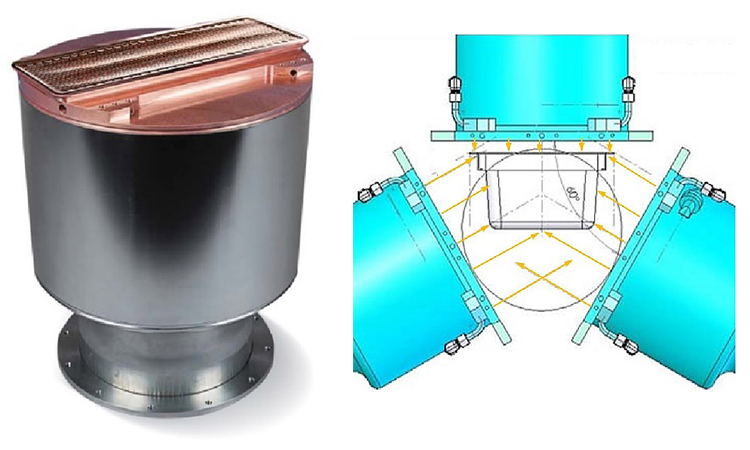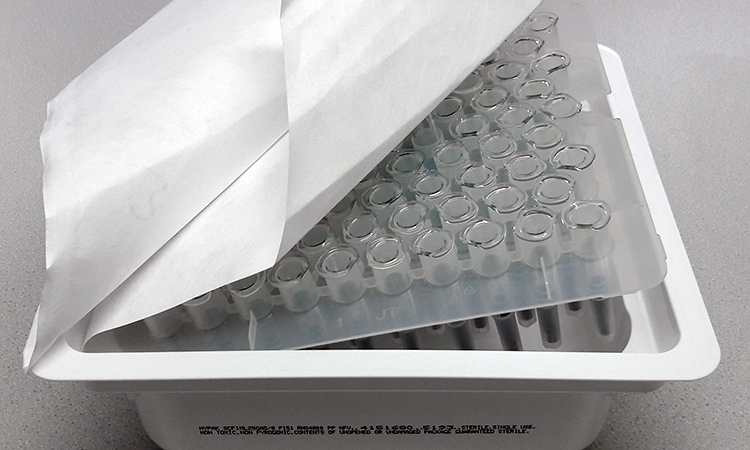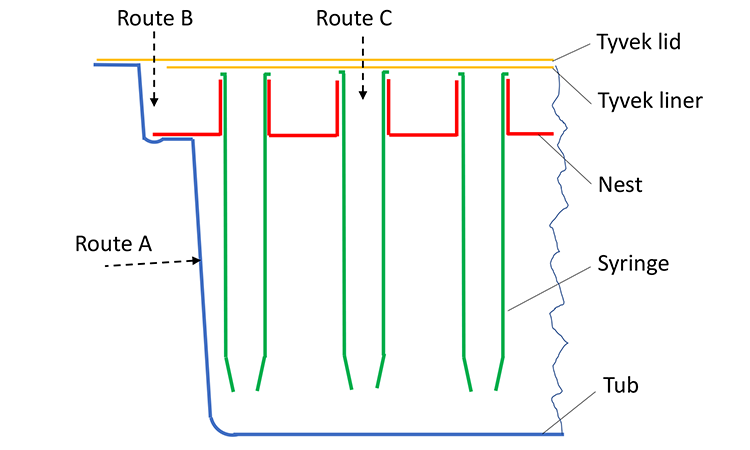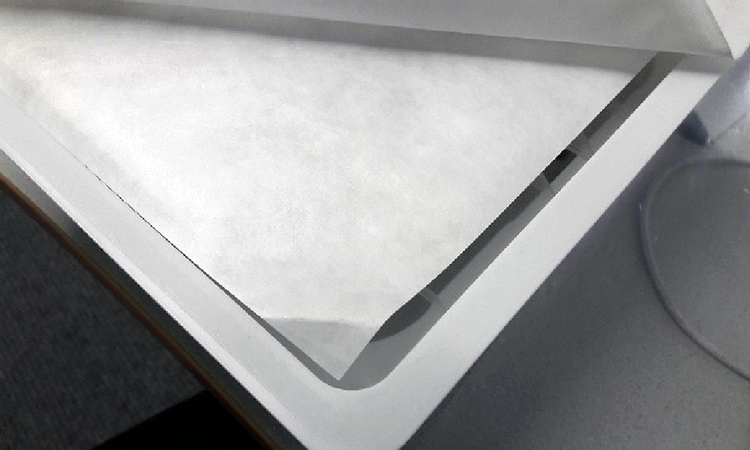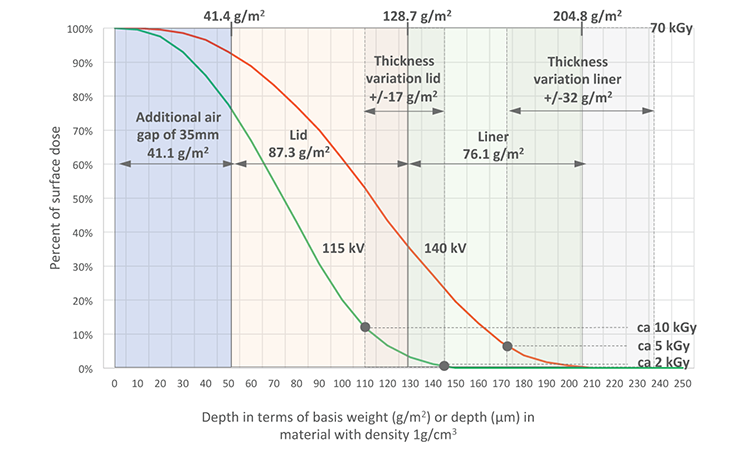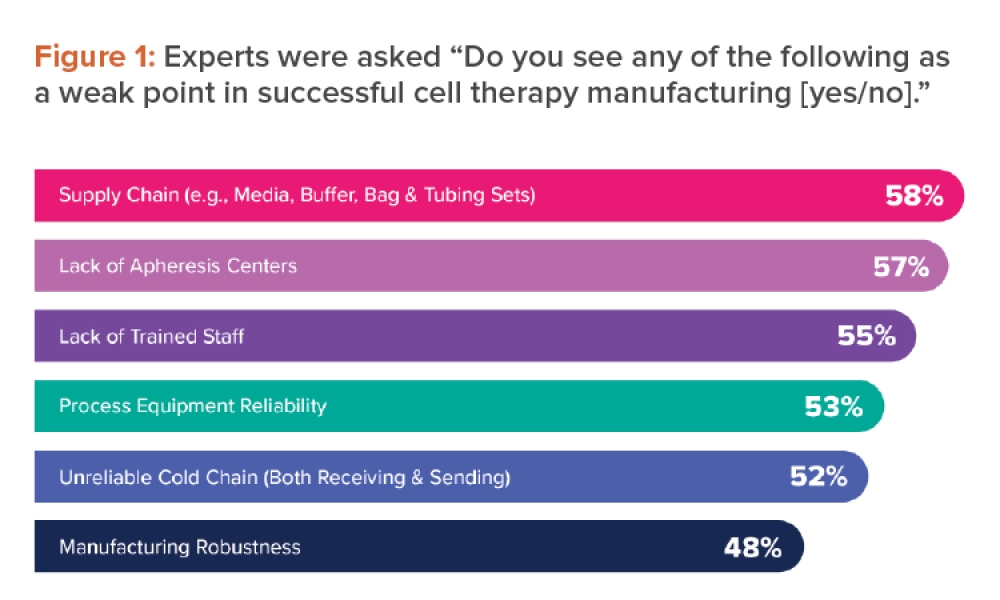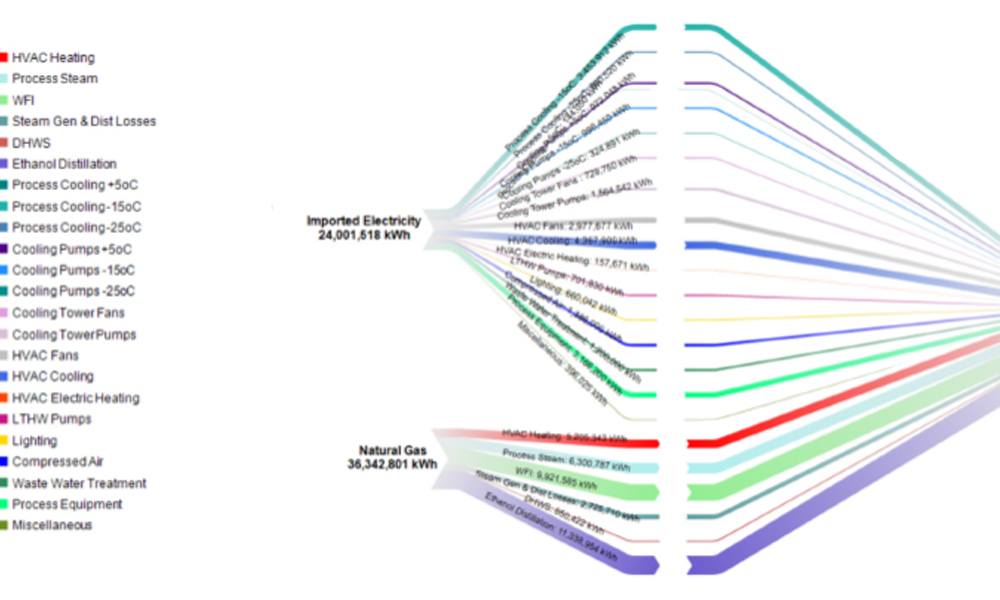But what if unsuitable parameters are chosen, such as a very thin liner or a voltage that significantly exceeds 120 kV? To estimate the radiation dose that might be delivered under these conditions, we assumed the same foil thicknesses as in the initial investigation, but increased the voltage to 140 kV. We then used a simple graphical method based on the depth dose curves, which is commonly used with homogeneously thick material by users of e-beam equipment (Figure 8).
We overlaid the depth dose curves with rectangles that represent the different objects in front of the electron window. In the initial investigation they include the additional air gap of 35 mm (total air gap 55 mm, air gap of 20 mm already considered in the depth dose curves) converted to a basis weight of 41.1 g/m2, the lid with a basis weight of 87.3 g/m2, and the liner with a basis weight of 76.1 g/m2.
E-beam tunnels are well established for aseptic filling, with more than 30 units in operation worldwide."
The initial investigation had shown a below-lid dose variation of approximately 2–10 kGy, which implies a thickness variation of the lid of approximately ±17 g/m2. This allows us to assume a correspondingly higher thickness variation for the combination of lid and liner of ±32 g/m2. Figure 8 shows that the area of lowest thickness of the combination of lid and liner received a dose of approximately 5 kGy (0.5 Mrad). Based on this maximum dose below the liner (and therefore on the syringes) we can evaluate the changes to the characteristics of the syringes, drawing on research by other groups.
COC material damage might occur in two ways: 1) directly, from low-energy electrons or 2) indirectly, from irradiation of the air in the tub, which leads to the formation of ozone (O3), nitric acid (HNO3), and nitrogen oxides (NOx), all of which oxidizing gaseous agents.1
The direct effect of electron-beam irradiation leads to chain scission, cross-linking, oxidation, and grafting. These in turn may change the mechanical or surface properties of the polymer, leach low-molar mass molecules from the polymer into the drug solution, allow the polymer to absorb the drug, or affect the compatibility of the packaging and its content.
,
"E-beam tunnel irradiation ensures that the aseptic zone in the filling area remains uncompromised.”
But does a moderate dose of no more than 5 kGy (0.5 Mrad) lead to significant damage on COC packaging? Because research is usually conducted at high doses, typically between 25 and 200 kGy, we must interpolate between the points of no irradiation and irradiation at 25 kGy. Two papers by Barakat report measurements on modifications of the characteristics of COC with respect to polymer degradation, effect on the antioxidant degradation, effect on the generation of low-molecular-weight compounds, chemical modifications, and interaction with drug solutions. All measurements showed only a small difference between the points of no dose and a dose of a few kGy.
,
This means that no significant changes to the COC polymer characteristics would be expected.


